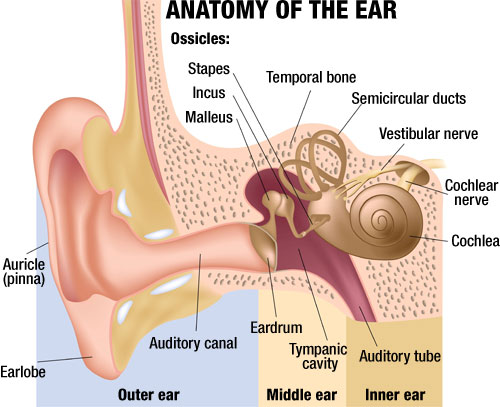What’s With the Wax?
 |
Jonathan M. Lee, MD Assistant Professor, Dept. of Otorhinolaryngology Perelman School of Medicine at the University of Pennsylvania, Philadelphia, PA About the author: Jonathan M. Lee is Assistant Professor of Clinical Otorhinolaryngology: Head and Neck Surgery, Department: Otorhinolaryngology: Head and Neck Surgery https://www.pennmedicine.org/providers/profile/jonathan-m-lee |
Ear wax, or cerumen, is naturally produced by our bodies, specifically the cells lining our ear canals. Normally cerumen functions to protect the skin of the ear canal, and the body extrude any excess out through the ear. At times, however, wax can build up enough to fully block the canal resulting in a cerumen impaction. The symptoms can include significant discomfort, muffled hearing, ringing sounds, and dizziness. There is also evidence that a wax blockage can increase your risk for an ear infection. According to some studies, up to 50% of older adults can be walking around with a significant wax blockage. The risk of wax blockage increases as we use more physical barriers such as cotton swabs, hearing aids, and earplugs.

Cerumen impaction is fairly easy to diagnose upon direct visualization by your primary care doctor or otolaryngologist. The first step in treatment is often to use a course of softening drops in the ear canal, such as carbamide peroxide which is widely available over the counter. Such drops should be avoided if a patient has ear tubes or a suspected hole in the eardrum. The drops should be administered while laying down with the affected ear up, and patients should wait at least five minutes after drop administration before getting up. One study demonstrated that patients that used such drops were five times as likely to resolve the wax blockage as patients who had no treatment.
If conservative measures such as ear drops fail, the next step in treatment is manual removal. Although some physicians favor irrigation, or flushing the ear canal with fluid, this may result in a higher risk of complications such as ear infections, pain, and even perforated eardrums. Manual removal with various tools such as a metal loop, vacuum suction, and microscopic forceps via a hand-held otoscope or a binocular microscope can be extremely effective, fast, and generally well tolerated. In skilled hands, the cure rate is extremely high and the risk of side effects is very low. In the event that hearing loss persists after wax removal, a formal hearing evaluation and further workup should be considered. Additional information of pharmacy products of CVS.
 Intended for EAR HYGIENE: cleaning of debris, itch relief, exfoliation, water extraction, and superficial wax around the ear and outer ear canal. |
 NeilMed Clearcanal – Dr. Mehta’s ear wax removal complete kit |
(1313)
LM Hall liked this on Facebook.
Sharon Mcnulty Connolly liked this on Facebook.
Cindy Nielsen liked this on Facebook.
Carl Farris liked this on Facebook.
Janet Winkler liked this on Facebook.
Maureen Martin liked this on Facebook.
Jennifer Wright liked this on Facebook.
Chantou Renaud liked this on Facebook.
Jennifer Wright liked this on Facebook.
Maureen Martin liked this on Facebook.
LM Hall liked this on Facebook.
Sharon Mcnulty Connolly liked this on Facebook.
Cindy Nielsen liked this on Facebook.
Carl Farris liked this on Facebook.
Janet Winkler liked this on Facebook.
That’s the reason I wear earmuffs when mowing!